Monday, 10 July 2006
Distance 19 km
Duration 3 hours 40 minutes
Ascent 18 m, descent 31 m
Map 27 of the TOP100 blue series (now superseded)
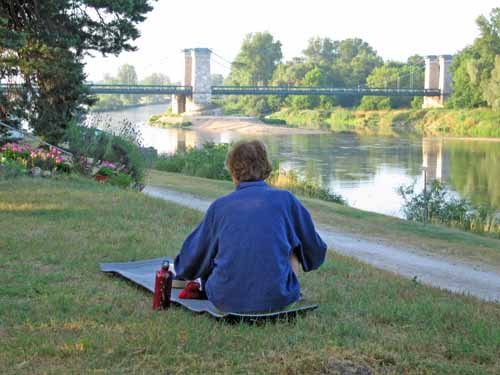
We left at 7:30, an hour before the camping office was to open, so we never managed to pay for our comfortable night by the river.
Once again we followed the GR3 again, following a small stagnant canal, and before long we arrived at Briare, whose claim to fame is the handsome metal Pont-Canal. This conducts the waters of the Lateral Canal of the Loire across the Loire itself, to join the Canal de Briare on its way to the Seine. It was designed by the illustrious Gustave Eiffel and was the wonder of the age when it was finished in 1896.
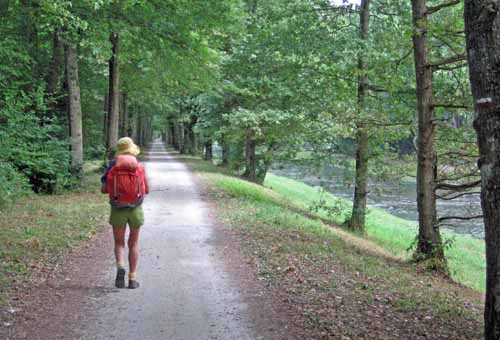
It had taken six years to build, and replaced the previous arrangement in which the canal had to go down and cross the river at Châtillon-sur-Loire through a pair of locks, which proved unworkable when the river was low.
The stagnant canal we had just walked along was the remnant of this earlier system. This was the first metal pont-canal that we had encountered.

The one across the Tarn at Moissac was a substantial brick structure, but at Briare the engineers were worried about the monumental floods that periodically swept down the Loire, and decided a lighter design, with a metal channel supported by piers, would offer less resistance to the force of the water.
The town of Briare was mostly of the same vintage as the pont-canal, solid rather than romantic, but charming because of its waterways and ponds.
All the bars we saw were closed at this early hour, but a tramp, lying on a park bench with his dog, told us where to find one that was open, at the far end of town.
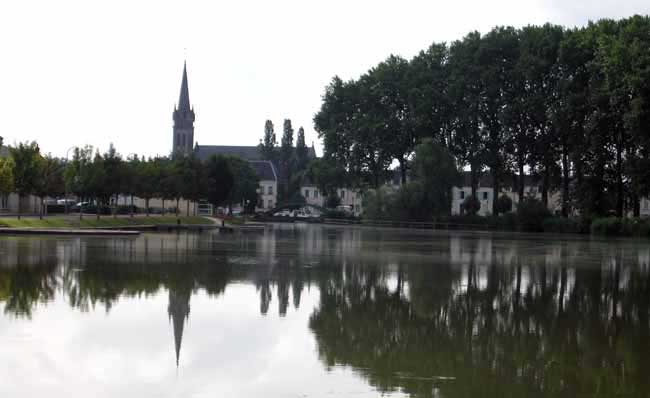
We stocked up at a boulangerie along the way and had our usual delicious second breakfast in the dim interior, among drinkers whose only topic of conversation was the catastrophe of last night’s match.
Leaving the town over a hump-backed bridge and then beside another small canal, we finally found the GRP that followed the right bank of the river (the GR3 had crossed over at the Pont-Canal).
The track was under trees most of the time, fortunately, and when we reached the point where the GRP turned towards the highway, we saw a track continuing along the riverbank, with a hand-written sign “To Gien”, so we took it and had another couple of kilometres of peace before we joined the highway where the by-pass began.
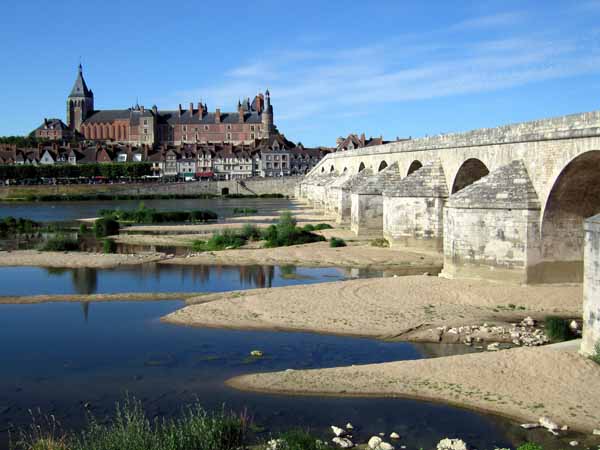
Then it was a 40-minute trudge on a footpath beside the traffic until we got to the pedestrian centre of the town, which was a tired walker’s dream.
Before settling down at the bar, we went to a Presse and bought the next TOP100 map (number 26), then to the Office of Tourism at the end of the street to get brochures. We looked through these as we sat under a tree sipping our coffee.
Greatly refreshed, we walked over the great old twelve-arched bridge, to the camping ground stretched out along the opposite shore. It was a flash three-star establishment, and we were the first Australians that the receptionist had ever booked in. We paid €12.50 as walkers, instead of the usual €17.

There was a crowd of caravans and tents under the trees in a broad grassy field which sloped down to a beach, blisteringly white in the midday sun.
We chose a spot as near as possible to the water, under a tall, dense poplar tree, whose shifting shade we pursued as the afternoon went on. After showers, lunch and a deep sleep, we crept over to the pleasant little café on the premises for an afternoon drink under an arbour of vines.
It was too hot to venture further afield until the sun had begun to sink into the trees, when we stepped back over the bridge to look around the town before dinner.

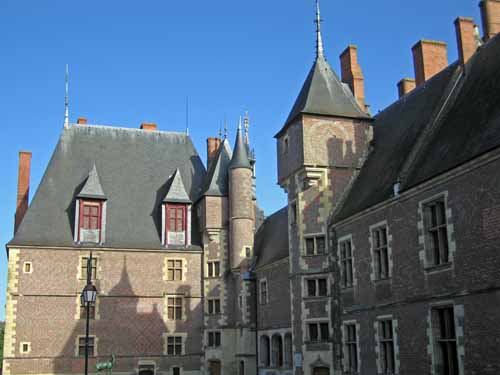
Like all French river towns, Gien has a long history going back to prehistoric times. During the Roman occupation the settlement was at Gien-le-Vieux, a little way downstream from the present town, but by the tenth century this was abandoned as indefensible, in favour of the rocky spur where Charlemagne had ordered a fortress to be built. The present château, mostly in Renaissance style, is on the site of this fortress.
In June 1940 Gien was heavily bombed by the advancing German army on their way to Paris. The bridge was blown up and the town was reduced to a pile of smouldering ashes, but the château survived relatively intact.
After the war Gien was lovingly rebuilt to resemble as closely as possible the town that had been lost.
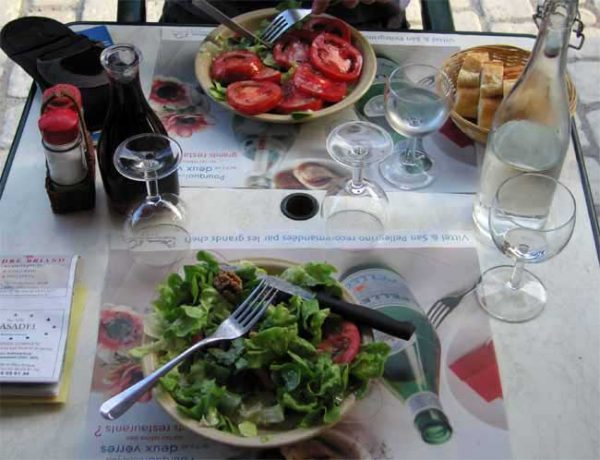
We had a glass of cold rosé in the square, then wandered about in search of somewhere to eat. It was looking very doubtful until we stumbled on a whole strip of restaurants along the riverside street.
The diners occupied every available spot on the pavement, looking across the road, through a line of pollarded trees, to the shining water.
Our meal began with a tomato salad and a nut salad, and for our mains we had skewers of beef with green beans and Roquefort sauce.
A big black limousine with Paris plates drew up to the kerb and proceeded to bump its way in between two parked cars.
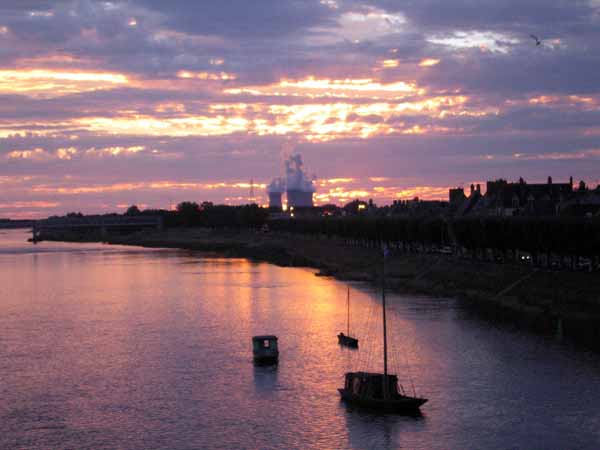
The driver emerged, wearing a grey suit and winkle-pickers, with a cigar clamped in his teeth, barking into his mobile phone.
There was a general murmur from the diners and the man at the next table next leaned over to us apologetically and said, “He’s not a real Frenchman – he’s a Parisian!”. This seemed to encapsulate a good deal of the attitude of the provinces to the capital.
Our informers were from Orléans and had driven here in less than an hour to enjoy an evening by the river. It would take us half a week of effort to get to Orléans.
We returned over the bridge at sunset, with the plumes of the nuclear power station at Dampierre reflecting gloriously in the river.
Previous day: Belleville-sur-Loire to Châtillon-sur-Loire